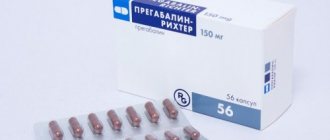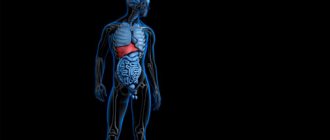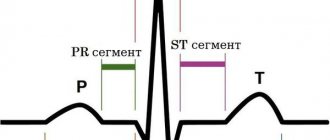Publication date: August 16, 2019
Tropicamide is a pharmacological agent from the group of M-anticholinergics, which is available in the form of eye drops. It is widely used in ophthalmology for examining the fundus of the eye, since it is capable of dilating the pupil for a short time and blocking changes in the curvature of the lens. Drops are also prescribed to treat spasms, inflammation and adhesions in the chambers of the eye. The drug is included in the list of vital drugs and is often sold in pharmacies without a doctor's prescription.
People suffering from drug addiction use it to mask pupillary constriction after using psychoactive substances. In addition, Tropicamide is administered intravenously along with various narcotic drugs in order to enhance euphoria.
Please note: Thanks to the action of Tropicamide, heroin and desomorphine addicts receive their usual pleasure by reducing the dose of opiates by half.
Another non-medical use of eye drops is to put Tropicamide in the nose. The effect develops very quickly. The “pharmacy addict” experiences intense euphoria and hallucinations that last about 20-30 minutes. Brain fog may persist for up to 60-90 minutes.
Content:
- What is Tropicamide and its use in official medicine: 1.1. Legislative framework and sales in pharmacies.
- Effect on the body: 2.1. Signs of withdrawal. 2.2. Consequences of drug addiction.
- How to quit Tropicamide: principles of therapy.
According to the pharmacological classification, Tropicamide belongs to drugs that block M-cholinergic receptors of the central nervous system.
It itself has a pronounced psychoactive effect, but is often used to enhance the effects of other drugs. Thanks to its availability and legal sale in pharmacies, the drug has gained popularity among young people and teenagers, so the question of how to wean yourself off Tropicamide is especially acute among parents of high school and first-year students. Do these “harmless” eye drops really pose a health risk? Can they cause addiction?
Main stages of treatment
Taking Tropicamide intravenously can be fatal for a person. After just a few months, the addict may die. Therefore, treatment should be started as soon as possible. Addiction treatment can be divided into several stages.
- At the first stage, physiological dependence is eliminated. Experts use medications for treatment. This allows you to cleanse the body of toxins and relieve the patient from withdrawal symptoms.
- At the second stage, the patient will undergo psychological rehabilitation. Here, in addition to the narcologist, a psychotherapist is also involved in the treatment. A specialist helps an addict learn to live a full life without drugs.
- At the third stage, the patient needs to socialize. It is necessary to change your social circle, get a job, make new friends, start a family. It is important to find something you like that will bring harmony and pleasure.
What is Tropicamide and its use in official medicine
The drug is intended for topical use and is available in the form of eye drops containing the active substance 5 and 10 mg/ml. The drug partially blocks neural transmission in the visual muscle system, which leads to temporary dilation of the pupil and loss of the ability to distinguish nearby objects. This effect is completely reversible, and vision returns to normal after 2–3 hours.
The drug is used exclusively in ophthalmology. Indications for its use are:
- the need for a diagnostic examination to examine the fundus, assess refraction and the condition of the lens;
- preparation for surgical intervention, including laser therapy;
- complex treatment of the inflammatory process in the vessels of the eye;
- recovery after surgery on the organs of vision, lens implantation.
Tropicamide is contraindicated in glaucoma and other eye pathologies accompanied by increased intraocular pressure.
Legislative framework and sales in pharmacies
Unfortunately, most often law enforcement agencies and departments for combating drug trafficking begin to study the issues of “pharmacy drug addiction” only when the problem has become relevant, and all that remains is to state the already existing negative consequences. Thus, attention was drawn to the addictive potential of Tropicamide only in the early 2010s, when in many regions of the Russian Federation sales of these eye drops almost tripled compared to 2008.
Officially, Tropicamide is included in list “A”, is subject to strict subject-quantitative recording and must be dispensed from pharmacies only with a doctor’s prescription.
In many medical institutions, the medicine is purchased centrally and used as prescribed by the doctor. But all these measures do not bring the desired result.
But not all pharmacies comply with the rules of prescription dispensing and monitor the correctness of paperwork. In addition, drops can be purchased illegally in the same ophthalmology clinics, where the shortage is then written off as “overdue” or for other reasons.
Tropicamide is much cheaper than most psychostimulants, so it is quite common among young people.
Signs of Tropicamide use
During the first week, it is impossible to detect signs of taking the medicine. They appear after 2-3 weeks of regular use and appear as:
- Ulcerative rashes on the skin.
- Changes in the color of the epidermis (yellow or gray tint).
- A rapid drop in hemoglobin levels (leading to chronic fatigue and exhaustion).
- Epilepsy attacks.
- Sudden weight loss due to metabolic disorders.
There is also the most obvious way to find out about an unhealthy addiction - to look in a medicine cabinet or a person’s personal belongings. As a rule, a drug addict buys eye drops in huge quantities (so that he does not have to go to a 24-hour pharmacy in the middle of the night). Moreover, the person never suffered from ophthalmological diseases. With the development of polydrug addiction in the apartment, the following may appear:
- Tablets and ampoules.
- Syringes.
- Medical tourniquet.
- Burnt spoons.
People often hide injection marks on their arms and legs. Therefore, even in sunny weather at an air temperature of +30 Co, they wear trousers and a shirt or jacket. It is impossible to determine pathological cravings for medications at home with 100% accuracy. There are test strips for urine or saliva testing, but there are two significant drawbacks:
- Test strips detect the use of 5-10 different types of drugs.
- A person will not voluntarily agree to take the test.
Therefore, for a better result, you need to do tests. When applying to the PND (psychoneurological clinic), having identified an addiction, the person can be registered. To maintain anonymity, you can contact a paid medical institution. You can conduct blood and urine tests for antibodies and metabolites to psychoactive substances anonymously at the Zdravnitsa professional treatment and rehabilitation center. For consultation and to make an appointment for testing, call us at 8.
Effect on the body
For non-medical use, Tropicamide is administered intravenously, and its single dose exceeds the therapeutic dose by more than 5 times, and as tolerance develops - up to 10-15 times.
In low doses, the drug has a relatively weak effect on the central nervous system, but when administered parenterally in high dosages, the so-called “cholinergic syndrome” develops, which is accompanied by vivid visual hallucinations and unusual bodily sensations.
The clinical picture of drug intoxication is similar to that of opiates, and Tropicamide is often mixed with heroin to enhance its psychoactive effect.
According to anonymous surveys, about 70% of people suffering from opiate addiction add these eye drops to their “main drug.”
Signs of withdrawal
Tropicamide very quickly causes physical and psychological dependence, and withdrawal symptoms are extremely difficult. Withdrawal is characterized by:
- pronounced psychomotor agitation;
- aggression;
- pathological, almost uncontrollable craving for taking the drug (which is why it is almost impossible to deal with withdrawal symptoms at home);
- headache.
Consequences of drug addiction
In addition, due to a significant excess of the therapeutically recommended dose, in addition to the “desired” psychostimulating effect for the dependent, signs of severe poisoning also occur:
- confusion;
- dry skin and mucous membranes;
- urinary retention;
- tachycardia, arrhythmia;
- increased respiratory rate, shortness of breath, feeling of lack of air;
- fever.
Systematic use of high doses of Tropicamide is accompanied by:
- photophobia;
- serious, usually irreversible vision problems, including blindness;
- liver damage with rapid development of hepatitis, cirrhosis and liver failure;
- toxic damage to the heart muscle, myopathy, critical arrhythmia;
- severe damage to large and small blood vessels, capillaries, thrombosis;
- hematopoietic disorders;
- tissue necrosis in the injection area, at the terminal stage - gangrene;
- chronic hyperthermia;
- dysuric disorders, nephropathy;
- rapidly progressing hepatic encephalopathy.
Frequent convulsive seizures (clinically they resemble epileptic attacks), catastrophic decline in memory and attention, cognitive and intellectual deficits are also possible.
According to statistics, the life expectancy of people who regularly use this medication does not exceed 2-3 years, so the problem of how to quit Tropicamide should be solved as quickly as possible. Death occurs from acute renal, respiratory or cardiac failure, a critical decrease in the filtration and detoxification function of the liver.
How does a drug overdose manifest and what should be done?
Why do drug addicts use Tropicamide? The effects and consequences give them a short-term euphoria, but the price is very high. To achieve a “high” you have to increase the dose, this is deadly. Manifestations of overdose are:
- Swallowing disorders. Dysphagia. Accompanied by partial paresis of the swallowing muscles.
- Dry mouth. Develops spontaneously. Accompanied by strong thirst and desire to drink.
- Pain in the eyes. Because intraocular pressure increases. A secondary attack of glaucoma begins. And even in relatively healthy people.
- Rapid breathing. Possible suffocation and symptoms of respiratory failure. Urgent help is needed.
- Pupil dilation. By taking a large amount of Tropicamide, its main effect is achieved.
- Cough. Hoarse and dry.
- Loss of ability to speak. Speech becomes quiet as the voice weakens.
- Decreased sweating. The patient does not sweat; thermoregulation may be impaired.
- Critical increase in heart rate.
If nothing is done, the patient may die from complications.
How to quit Tropicamide: principles of therapy
Drug addiction treatment is carried out strictly in a hospital setting, where the patient is guaranteed not to be able to get another bottle of drops. If there are symptoms of an overdose (critical increase in body temperature, arrhythmia, breathing problems), resuscitation measures are necessary.
There is no specific antidote, therefore, to solve the problem of how to remove Tropicamide from the body, standard detoxification methods are used. This:
- intensive infusion-drop therapy using polyion solutions, plasma substitutes, etc.;
- active supportive treatment to restore systemic disorders: medications are administered to stabilize blood pressure, normalize heart rate, stimulate blood flow, antioxidants and hepatoprotectors are mandatory;
- prevention of complications from the central nervous system: tranquilizers or antipsychotics are administered (the latter are necessary for symptoms of acute psychosis).
But detoxification alone is not enough to stop Tropicamide. The patient needs long-term psychotherapy; suggestive coding methods have proven themselves to be effective. After completing the main course of treatment, you should definitely undergo rehabilitation
, ideally - on the basis of a specialized medical center, where they not only deal with the social adaptation of drug addicts, but also pay great attention to their physical recovery, healthy eating, and sports.
It is impossible to quit Tropicamide on your own! Therefore, you should not waste time trying to self-medicate, which will not bring any results. The drug is extremely toxic, so you need to contact a specialized specialist as soon as you notice symptoms of addiction in a loved one.
Signs of an overdose of Tropicamide
Since people use the drops in large quantities daily, the likelihood of overdose increases significantly. It manifests itself in the form of the following symptoms:
- Dizziness.
- Loss of consciousness.
- Dilated pupils (lack of reaction to light).
- Hallucinations.
- Confusion.
- High body temperature.
- Tremor.
- Tachycardia.
- High blood pressure.
- Dry nasopharynx (impaired swallowing reflex).
- Intermittent breathing.
- Nose bleed.
- Migraine.
- Nausea.
At the first signs of an overdose, you should immediately call an ambulance.
Bibliography:
- Vladimirov V.Yu., Kaymak E.V. Increased use of Tropicamide eye drops as a narcotic substitute. - Interdisciplinary scientific and applied journal "Biosphere", 2012. - T.4, No. 1.
- Narkelyunas E.M. Experience in the treatment of chronic paranoid psychosis in persons dependent on tropicamide. - Tyumen Medical Journal, 2012. - No. 3.
- Seytakova B.M. "Pharmacy" drug addiction: causes and countermeasures. — Scientific component, 2022. — No. 3(7).
Need some advice?
OR CALL A DOCTOR
CALL!
+7
Treatment methods for Tropicamide addiction
The use of Tropicamide leads to severe addiction, which is almost impossible to get rid of. Many narcologists refuse to treat such drug addicts, since the result will not be successful. Therefore, it is important to choose a good clinic where specialists can provide proper assistance.
The problem is that addiction caused by “pharmacy” drugs is more difficult to treat than drug addiction. Treatment is extremely difficult if a person has been taking Tropicamide for a long time. As soon as the drug stops working, the person again has a strong desire to take another dose.
It is even more difficult to recover if the addict uses the drug with other drugs, such as heroin. A polydrug addiction develops, which is difficult for even professional narcologists to cope with. All this causes irreversible consequences in the body and also aggravates symptoms.
A patient can be cured only under one condition, if he himself refuses to take drugs and wants to find a normal life. It is also necessary to choose a good clinic with qualified specialists.







